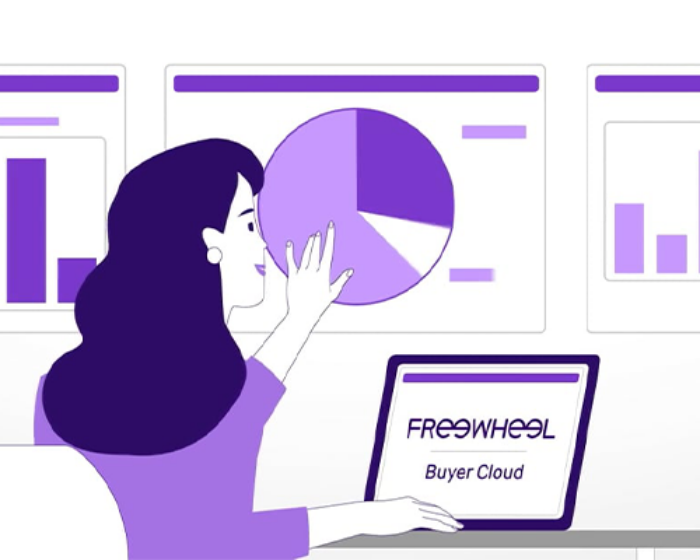Whether you’re from an agency or publisher, you’ll want to understand media buying terms for premium TV and video advertising. Learn more in our glossary.
Table of Contents
Target Audience
A target audience is a group of consumers that a business is trying to reach with its advertising and marketing efforts. This group is typically segmented by factors including age, gender, income, education, location, and interests. In most cases marketers want these consumers to buy their product, service, or idea. A targeted audience helps define their typical customer.
Example of Target Audience
Women, 30-40 years old, living in New York City, MBA degree, working in the advertising and media landscape, passionate about television.
Questions to Nail Your Target Audience
- Who identifies with your brand?
- What are their biggest challenges and goals?
- What channels do they look for this information?
- What benefits do you provide?
- What do they consider negative?
- Who do they trust?
FreeWheel helps its partners and customers reach its targeted audience across multiple screens. We can deliver ads across a variety of devices and inventory. We make it easier to find the perfect spots with our automation and tools.
Live Sports: The Power of the Live Audience for Brands
Reaching the Growing LGBTQ Population with Thoughtful Advertising
Premium Programmatic
Programmatic can be defined as the use of automated software or managed services to execute an advertising deal. In turn, premium programmatic means a variety of things depending on who you are. For publishers, it means having premium inventory valued and available to trusted and reputable advertisers as a complementary revenue source. For advertisers, premium programmatic means having access to exceedingly viewable and brand-safe inventory in the right setting with a relevant audience – with simplified workflows. Premium programmatic video has become a building block to many marketing campaigns through its simplicity.
FreeWheel’s position as the ad management platform for the majority of the premium video ecosystem provides advantages that no one else can match. With a complete view of all publisher supply, across direct and programmatic, FreeWheel is able to unify ad decisioning, resulting in the most valuable placements for both buyers and sellers.
Premium Programmatic’s Missing Piece Is…
Programmatic Module Case Study
CTV
CTV is also commonly referred to as Connected TV. It is a television set that is connected to the Internet via standalone devices, Blu-ray players, streaming boxes, gaming consoles, or built-in internet capabilities (think Smart TV’s) and can access a variety of longform and short-form web-based content.
CTV is made up of a collection of different devices and can be segmented into three groups:
- Attached devices (91% of ad views)
- Gaming consoles (5% of ad views)
- Smart TVs (4% of ad views)
CTV provides the advantages of digital advertising in a highly engaged, linear TV-like experience. It combines the best of both worlds. In fact, CTV’s average video ad completion rate is a whopping 97%.
Within the last 2 years, CTV viewing has accelerated and advertisers’ search for premium entertainment has rose significantly. FreeWheel focuses on giving advertisers the ability to target at scale while also maintaining high-quality inventory.
Across Europe, TV Viewing is Already a Connected Experience
2022 Upfront Views from Around the Ecosystem
OTT
OTT (over-the-top) is video content that’s distributed to viewers over the internet. Advertisers have more opportunity to reach their audiences directly since they do not have to go through traditional TV providers.
OTT advertising takes place across multiple formats including smartphones, laptops, and tablets. There is also opportunity to reach a smaller but more segmented target group than traditional broadcast advertising.
FreeWheel MediaTalks Podcast – Episode #1
Identity Resolution
Identity Resolution is the process of matching consumer identifiers to one individual profile as that person interacts with different devices and channels. It provides an omnichannel view of the consumer and allows marketers to gain more insight about the customer. This enhances campaign targeting and can help deliver a more seamless experience.
Examples of Personal Identifiers
Example of personal identifiers include but are not limited to:
- Email addresses
- Device IDs
- Account usernames
- Consumer IDs
- Loyalty numbers
- Mobile number
Identity resolution is constantly evolving in the premium video advertising space. To deliver an effective campaign, publishers must find a balance between connecting identify mechanisms across platforms while also giving consumers the transparency and control needed to understand how their data is processed. At the same time, advertisers are trying to navigate a fragmented environment which makes it harder to understand audiences across various channels and devices. It is imperative to better unify these identifiers.
FreeWheel is a key stakeholder for enforcing more robust identity management. We are focused on creating a more secure way to use data and share information.
TVE (TV Everywhere)
TV Everywhere are services that accompany a cable/satellite subscription, allowing the customer to watch the channels in their package anywhere, both inside and outside the home, without a set-top-box. The content can be viewed on most viewing devices including a computer, smart TV, smartphone, or digital hub. Viewers must log into an app to use their subscription.
FreeWheel typically thinks of TV Everywhere as the New TV. Consumers are constantly viewing premium content on various screens. Our business is structured to empower all segments of the New TV ecosystem by transforming the way buyers and sellers, transact, manage, and optimize their advertising.
FAST is Becoming a Force in Streaming Ad Delivery
KPI
KPIs also known as key performance indicators are quantifiable forms of measurement used to evaluate the success of a specific goal or objective.
Advertisers should prioritize KPIs. They should know who their target audience is and when this group is active and engaged. This will allow them to promote their products or services at the right time and right place.
Good KPIs show evidence of progress towards a desired goal and measure results that help inform better decision making over time. They can help track project performance, effectiveness, quality, timeliness, and resources.
FreeWheel has partnered with various organizations to unify ad decisioning across all video. Advertisers will be able to deliver more specific KPIs and this will open access to TV for more companies. Ultimately, this will help us create an ecosystem that is easier and more accessible to advertisers.
The Ins and Outs of Bid Shading
Cross-Screen Addressable
In today’s world, consumers can view content across an array of devices and channels. Cross-screen addressable advertising is complementary to TV since it allows advertisers to share relevant video ads to consumers on the go. Through cross-screen addressable, marketers can deliver the right video ad to the right audience at the right time and place.
FreeWheel has cross-screen advertising measurement solutions that allow advertisers to understand their campaign performance across different platforms. We look to provide a unified and transparent view of video investment so that advertisers can understand how their consumers’ viewing habits and changing and shifting by device.
Reaching Voters in a Cross-Screen World
The Path to Cross-Screen Measurement
VOD
VOD refers to on-demand video content that can be watched over the internet or through a viewer’s STB at any time or place. This content typically includes shows, sports clips, news, or movies that have already aired. VOD provides convenience for viewers, affordable promotions, content variety, and larger reach.
FreeWheel has invested heavily in STB VOD so that we can support both buyers and sellers in their creative solutions. We have worked with the publisher side to enable unified demand, better creative workflows, unified measurement, and VOD addressable. On the advertiser side we’ve aggregated a footprint of STB VOD inventory across multiple publishers and MVPDs so media buyers can access them all in one plan.
Linear TV
Linear TV is the traditional broadcast television system where video content is delivered through cable or satellite. Linear TV has scheduled ads and every household that watches the show at the same time sees the same ad.
FreeWheel is focused on connecting its buyers and sellers by centralizing linear and digital advertising. We are focused on bringing a single impression goal cross-screen through our MRM platform. This will help markers maximize efficiency across their audience.



